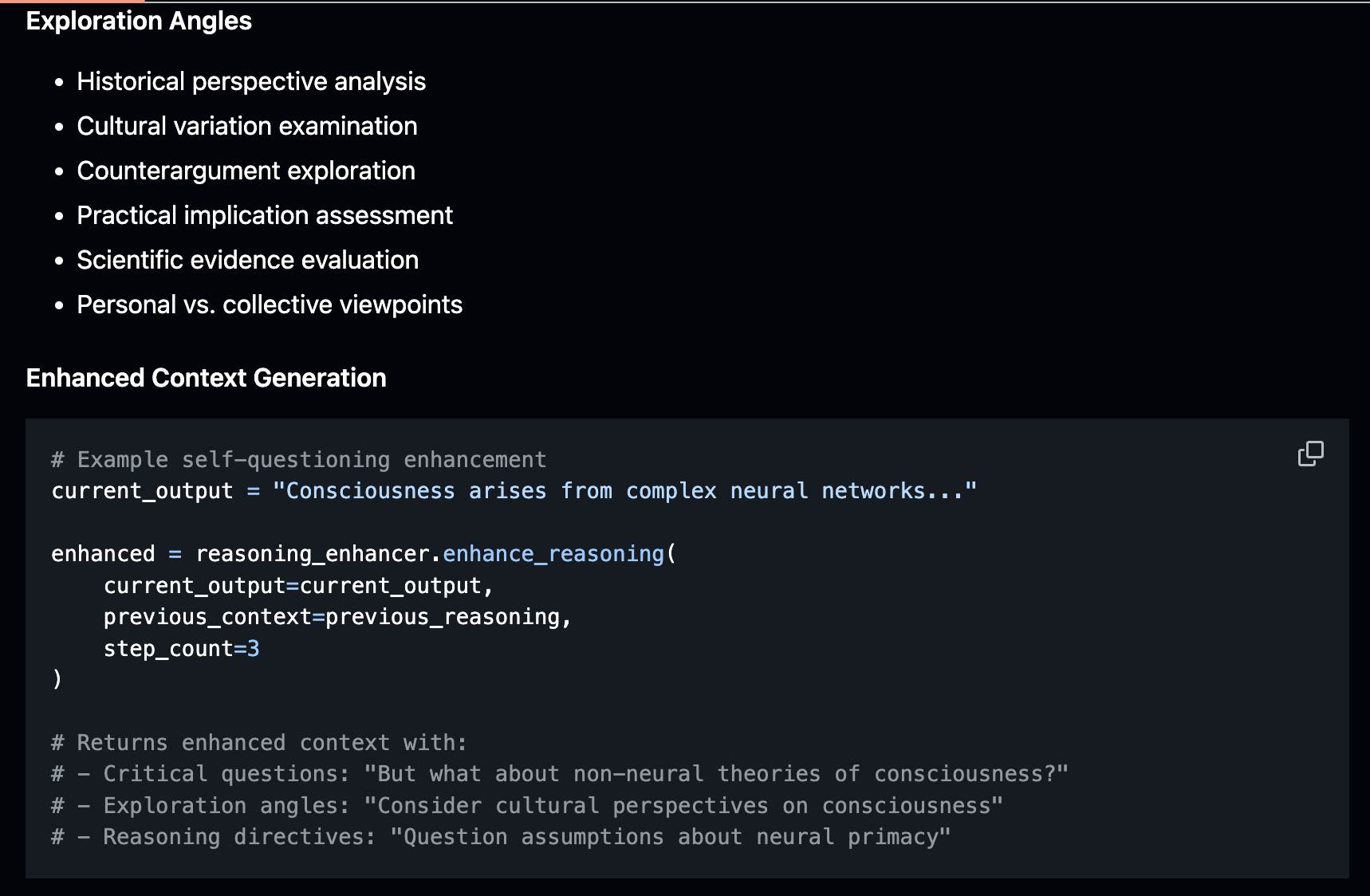The system is designed to mimic aspects of human cognition by not just providing answers, but by actively simulating how thoughtful people think. It recognizes linguistic patterns (like absolute statements or causal phrases) and automatically generates follow-up questions tailored to those patterns. These "pattern-triggered" questions challenge assumptions, seek exceptions, or prompt alternate perspectives. Additionally, the system explores reasoning from multiple angles, such as historical context, cultural factors, counterarguments, practical implications, scientific evidence, and both personal and group viewpoints. When presenting its output, it doesn't just state an answer, but produces enhanced context that encourages deeper reasoning: it recalls previous steps, adds new critical questions relevant to the current step, and gives an explicit prompt to pick a question or reasoning gap to explore further. This structure guides the reasoning process to be more comprehensive, skeptical, and insightful at every stage.



